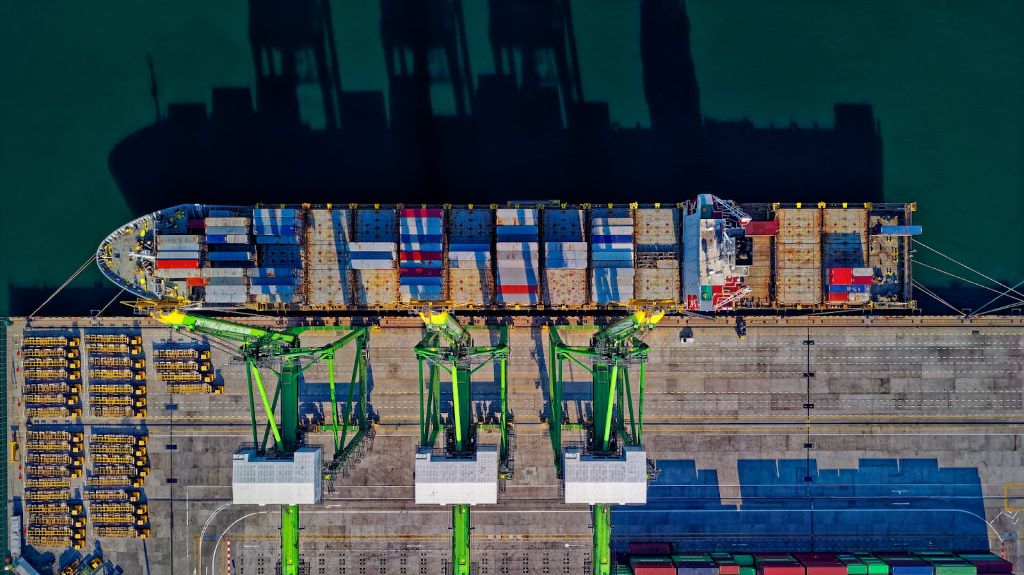
Dubai is an iconic destination for the modern traveler, boasting a unique blend of old and new. With that in mind, it’s no surprise that navigating customs clearance can be intimidating to visitors unfamiliar with the process. But understanding Dubai’s customs requirements doesn’t have to be daunting – if you plan ahead and know what documents are required, the process will be swift and stress-free. Take the case of John Smith: after spending a week in Dubai on business, he was able to quickly pass through customs without any issues thanks to his preparations prior to arrival.
In this article, we’ll cover everything you need to know about passing through Dubai customs smoothly. We’ll explore which documents should always be carried when traveling in or out of the city; explain how different items are classified at customs; as well as outline potential fees associated with particular goods being imported into or exported from Dubai. Finally, we’ll also provide tips on where travelers can find additional information regarding Dubai Customs procedures.
For those planning their next trip abroad, familiarizing yourself with these regulations now may save time (and headaches!) later!
1. Overview Of Dubai Customs Clearance
Dubai customs clearance procedure is essential to the process of importing goods and services into the city. It can be a daunting task if one is not familiar with the guidelines and processes involved; however, understanding what it entails makes this complex process easier to navigate. To begin, an overview of Dubai Customs Clearance may provide helpful guidance in comprehending its complexities.
Like many other cities around the world, all imports entering or leaving Dubai must be cleared by their respective customs agency before they are allowed to enter the country’s territory. Every item imported needs approval from Dubai’s Federal Authority for Nuclear Regulation (FANR) and has to meet certain standards set by them. In order to do that, importers need to submit various documents including shipping invoices, packing lists, commercial invoices and certificates of origin among others. Once these documents have been submitted and approved, payment of any applicable fees should be made according to the tariff regulations set out by FANR prior to shipment arrival at port of entry. The efficient processing of these documents helps ensure smooth transportation through customs without delays caused due to discrepancies between paperwork and actual cargo being shipped.
A great example illustrating how crucial getting this right is could be likened to climbing a mountain: you’ll only get there if you take each step correctly – missing even one will cause your journey upwards towards success to come crashing down! With careful planning and attention paid during documentation preparation stages as well as on-site inspection procedures, businesses can avoid unnecessary complications when going through Dubai’s custom clearance protocol. Thus making sure that goods arrive safely and promptly at their intended destination within legal limits – just like reaching the summit of a successful climb! As we move forward let us now focus our attention on types of clearance services available in Dubai so that our path up remains unobstructed throughout the entire trip…
2. Types Of Clearance Services
When it comes to the types of clearance services available for those looking to transport goods through Dubai, there are a few different options. The first is direct customs clearance – this occurs when one agent handles all documentation and filing needs from start to finish on behalf of the importer or exporter in order to get their goods cleared from customs quickly.
The second option is indirect customs clearance which involves two agents. In this case, the freight forwarder will supply all relevant documents to an appointed clearing agent who then submits them directly to Dubai Customs for processing and approval. This type of service can be beneficial if you’re dealing with multiple shipments that need to go through customs at once since an experienced clearing agent may have faster access than what would be possible without their help.
No matter which route an individual chooses, they should always ensure that they’re fully compliant with local regulations in terms of necessary paperwork, fees, taxes and other requirements before submitting any items for shipment or pickup. Understanding these guidelines is essential for successfully getting goods into or out of Dubai quickly and efficiently. Moving onto what exactly is needed to do so…
3. Documentation Requirements
As the third step of Dubai’s customs clearance procedure, documentation requirements must be taken into account. To make sure your shipment can pass through without a hitch, it is essential to ensure you have all relevant paperwork in place. Here are just some of the documents that need to be submitted before goods arrive:
- Bill of Entry – this is an official declaration detailing the origin and nature of cargo being imported or exported.
- Invoice – this document should include information such as date, quantity and value for each item transported.
- Packing List – which provides details about how items were packed within containers/packages when they arrived at Customs.
It’s also important to note that any additional permits required by local authorities may need to be obtained prior to shipping arriving in port too! Without these critical pieces of paperwork, there could potentially be delays with your shipment – something no business wants! To avoid such issues, it’s best practice to double check all documents are accurate and up-to-date before submitting them for customs clearance purposes.
Now that we know what needs to be prepared ahead of time, let’s move on to exploring the actual clearance process involved…
4. Clearance Process
The Dubai Customs Clearance Procedure is an important step for ensuring that goods arrive at their destination on time and without complications. The fourth step of the process involves the actual clearance, which consists of several key steps such as obtaining a release order from Dubai Customs, presenting documents to Customs officials for verification, paying any required duties and taxes, and collecting your goods once they have been cleared.
At each stage of the procedure, it’s essential to make sure all documentation is accurate and up-to-date before proceeding to the next step. It’s also important to have an accurate assessment of the relevant duties and taxes that will need to be paid prior to submitting paperwork. If these requirements are not met, delays may occur or additional charges could be imposed on the shipment.
With a clear understanding of what documentation is needed and proper preparation in advance, this step can go much more smoothly. Once this is accomplished, businesses should take a look at how tariff and duty rates are determined when importing goods into Dubai. This will help them plan ahead for any extra costs associated with their shipment.
5. Tariff And Duty Rates
Navigating the complex landscape of import and export regulations can be a daunting task, especially when it comes to understanding how tariff and duty rates are applied in Dubai. It’s like being dropped into a jungle with no map; you might make progress but could easily become lost without the right tools.
Thankfully, there is help available for those who wish to understand this aspect of customs clearance procedures. Tariff and duty rates may vary depending on what type of goods are imported or exported, their origin, as well as other factors such as whether they’re subject to certain taxes or not. The best way to get an accurate picture of these potential costs is by looking up the applicable rate through Dubai Customs’ website. This will give importers and exporters an idea of what fees they’ll need to pay before beginning the process of customs clearance.
All that said, understanding tariff and duties does not guarantee success during the customs clearance procedure – staying knowledgeable about all aspects of the process is key for a smooth experience. With that in mind, let’s turn our attention to some useful tips for Dubai customs clearance.
6. Useful Tips For Dubai Customs Clearance
Planning and navigating through the Dubai customs clearance process can be a pesky pursuit. Fortunately, this guide is here to help you with useful tips for making it easier. With some forethought and preparation, you can ensure smooth sailing when crossing borders into Dubai.
First of all, make sure that your documentation is in order before attempting to enter or exit the country. All necessary paperwork should be filled out correctly, complete with any required stamps or signatures from relevant authorities. Additionally, having contact information on hand such as phone numbers of agents who might assist you at various checkpoints or points of entry will save time if there are questions about your paperwork.
Another important point to consider is adhering strictly to declared limits on items like money and goods carried across international borders. Strict regulations govern what individuals may bring into Dubai; understanding these rules beforehand can prevent fines or delays while clearing customs. Furthermore, familiarizing yourself with local currency exchange rates ahead of time helps you calculate total costs accurately so that you don’t come up short when settling payments due upon arrival.
By preparing thoroughly in advance and taking precautions during travel, travelers can steer clear of potential issues associated with customs clearance in Dubai. Knowing exactly which documents are needed for successful border crossings makes the whole experience much more efficient and hassle-free – leaving plenty of energy left over for exploring this amazing city!
Conclusion
In conclusion, clearing customs in Dubai can be a daunting task. It is important to understand the different types of clearance services and ensure that all necessary documentation is provided in order for goods to pass through customs. Knowing what tariff and duty rates apply will help make this process smoother as well. Finally, those looking to move goods into or out of Dubai should keep useful tips like pre-clearance options, checking with government websites for updates on regulations, and familiarizing yourself with the freight forwarder’s procedures in mind when preparing for customs clearance. All these steps will help you sail through the waters of customs smoothly – like a swan gliding across a lake.









